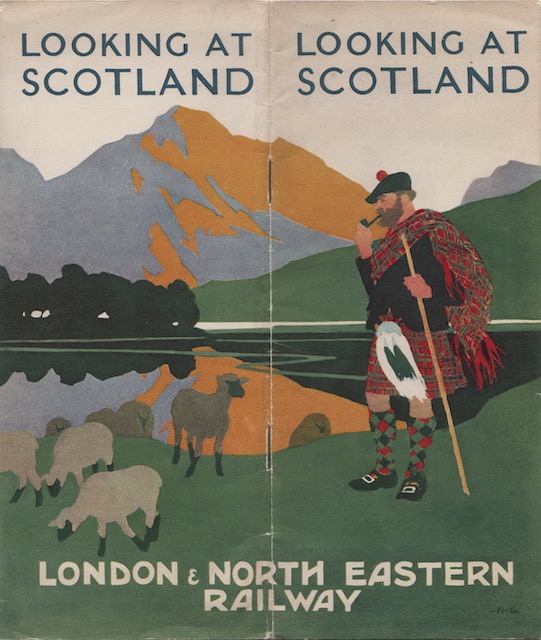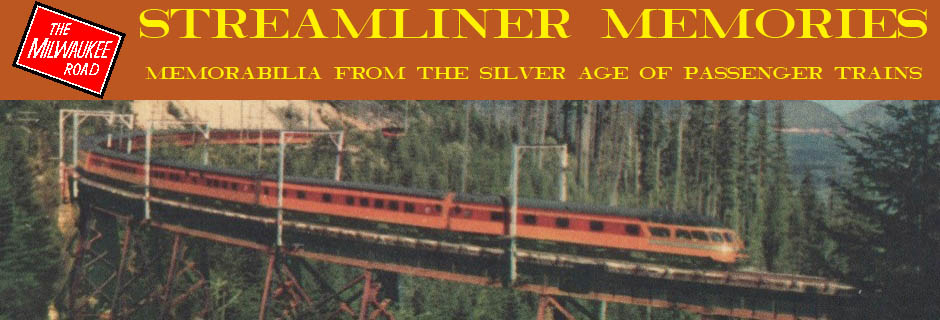I acquired this booklet when I was thinking about Vilma and Helen Hruska’s voyage from Canada to Greenock, Scotland. After arriving in Greenock, they must have taken a train to London via Glasgow, possibly on the London & North Eastern route. However, there were two main routes between Glasgow and London, and it is more likely that they took the other route over the former London, Midland and Scottish Railway. By 1953, when the sisters were traveling, the government had nationalized all of the main railroads anyway.
 Click image to download a 8.2-MB PDF of this 38-page booklet.
Click image to download a 8.2-MB PDF of this 38-page booklet.
This booklet is undated. One clue regarding the date is a New York City telephone number for an agent of the London & North Eastern Railway: Caledonia 3234. New York City adopted seven-digit phone numbers in 1930, so the booklet must be from the 1920s.
Another clue is that the booklet title, “LOOKING AT SCOTLAND,” is in the Gill Sans typeface. Released in 1928, the font was chosen by London and North Eastern to be its standard typeface in 1929. The typeface isn’t found anywhere else in the booklet, suggesting the company was just beginning to use it. So I would date this to 1929.
The booklet is more of a travelogue than an advertisement for taking the train. It includes numerous small photos — one each on most pages — accompanying text describing various parts of Scotland visible from trains of the L&NE. The booklet includes a tissue-paper map that unfolds from the inside back cover.
The cover illustration is signed “H.G.” This refers to an artist named Henry George Gawthorn (1879-1941). Gawthorn was born in Northampton, studied art in London, and made many posters for the London & North Eastern as well as other travel businesses.
The London & North Eastern was the creation of a government-ordered merger in 1923. One of its constituents was the Great Northern Railway, which had impressed James J. Hill enough that he renamed his St. Paul, Minneapolis & Manitoba Railway after it. London’s Kings Cross Station, which was featured in the Harry Potter books, was built by the Great Northern, and a hotel next to the station is still called the Great Northern Hotel.
